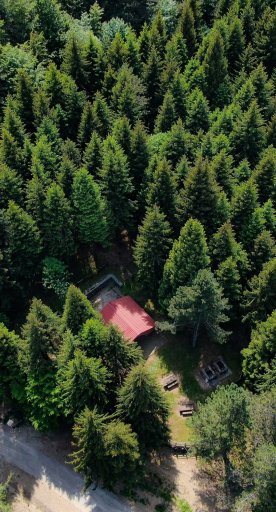
Lusuolo Castle
From a medieval defensive bastion of Malaspina family to an elegant Florentine residence
Looking towards the important ford of Magra river, near the Church of Santa Maria Assunta and the hospital which offered shelter to pilgrims and travelers along the Via Francigena in Lunigiana, the Lusuolo Castle stands imposingly on a rocky spur, anciently placed to defend and control the village and the Lunigiana valley.
Today the castle is one of the numerous fortresses open to the public, as well as seat of the Emigration Museum of People of Tuscany.
Discover all the 2024 opening dates.
The fortified village

The village of Lusuolo is a typical example of a settlement developed along a single street which follows the back of the hill, whose highest point is dominated by the Castle. The inhabited nucleus has a rectangular shape, whose extremities, the only entrances to the village, are protected by imposing walls.
The church of the village is mentioned since 1187, mentioned in the papers of Chapter of Luni and in the privilege of Pope Gregory VIII as a dependency of the nearby Parish Church of Vico, today Parish Church of San Martino in Castevoli.
The castle

Originally belonging to the fiefdom of Corrado the Ancient, Marquis of Mulazzo, the castle became autonomous and a marquis residence thanks to Azzone Malaspina: it is from this period that the oldest structures of the fortification date back.
Around the middle of the 15th century, it was partially demolished by the Campofregoso family and in the following century, due to the rivalry between Florence, Genoa and Milan for the control of Lunigiana, it was ceded by the Malaspina family to the Grand Duchy of Tuscany. This moment marks a major extension work on a structural level: from a medieval castle, the residence is transformed into a real building, accompanied by an action of consolidation and updating of the defensive structures.
Subsequently, after the annexation of Pontremoli to the Grand Duchy of Tuscany at the end of the 17th century, Lusuolo lost its strategic function and was progressively dismantled and demilitarized. In the 20th century, it was purchased by the Porrini family who, following the damage caused by the 1920 earthquake, sold it to the State.
However, thanks to the restoration and renovation works begun at the end of the last century, the splendors of the majestic Castle have been brought to light which remember its important past: the internal rooms, the kitchen with the large fireplace and oven, the open-air stables, the soldiers' chapel, the bombers' quarters and the main floor with the Marquises' bedrooms.
Furthermore, from the large terrace and the patrol walkway, it is possible to admire the suggestive surrounding panorama, with a view that extends from the Apennine ridge to the valley floor.
Emigration Museum of People of Tuscany

Since 2004, some rooms of the castle have housed the Emigration Museum of People of Tuscany which, through photographs, documents and memorabilia, tells the stories of those who left their small village to reach very distant lands in search of work and better living conditions.
The photographs recall the difficult condition of migrants, but also the success of those who were lucky in the new continent: an example are the booksellers of Montereggio, whose publishing houses and bookshops are still working in the United States of America and Argentina.






